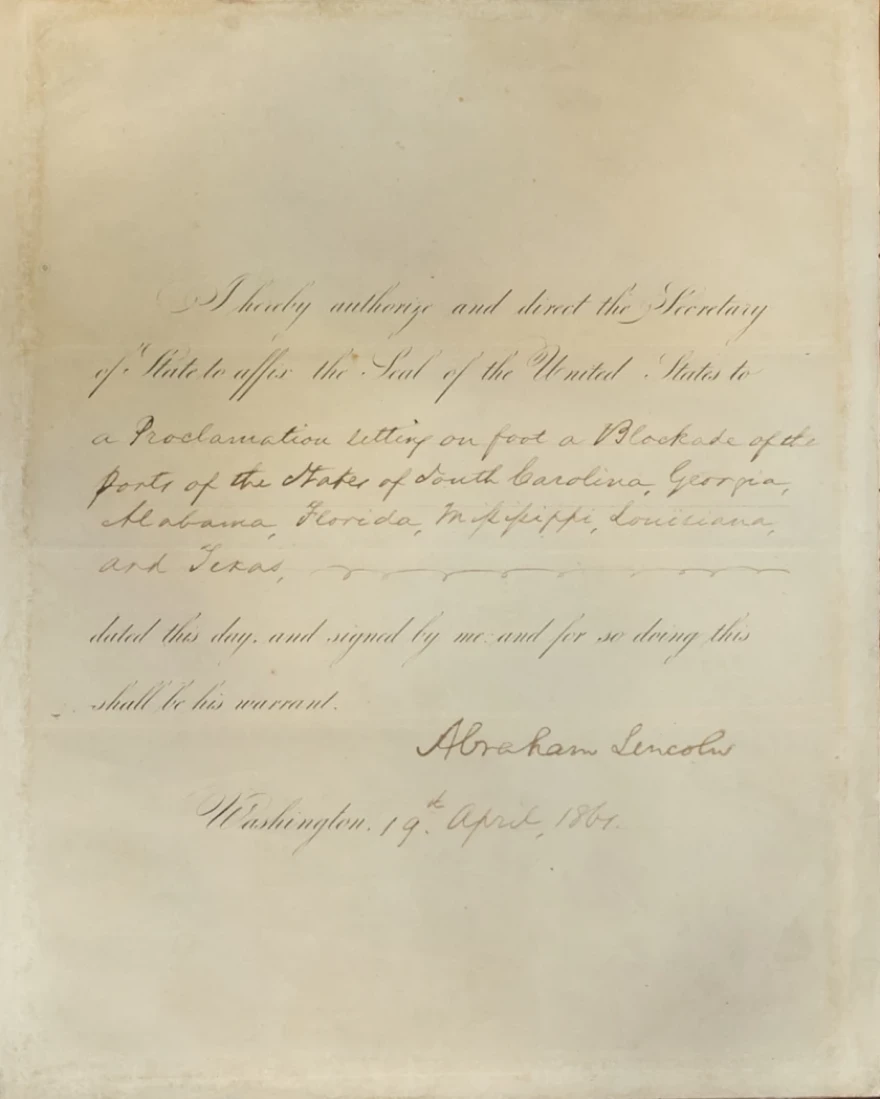One of the most fateful documents of Abraham Lincoln’s presidency — and in all of American history — will go on public display this week at the legendary Illinoisan’s namesake museum in Springfield, thanks to a donation from Gov. J.B. Pritzker and first lady M.K. Pritzker.
The Pritzkers on Tuesday unveiled Lincoln’s order for a naval blockade around ports spanning the South effective April 19, 1861, marking the 16th president’s first direct military action against Confederate states a week after the rebels’ attack on Fort Sumter sparked the Civil War.
The 163-year-old document had been in an anonymous private collection until its purchase at auction by the Pritzkers, who donated it to the Abraham Lincoln Presidential Library and Museum.

In a statement, M.K. Pritzker called the document “a testament to his [Lincoln’s] unwavering pursuit of justice. We’re proud to make this donation on behalf of the people of Illinois.”
The document was listed as sold for $471,000 last summer by Heritage Auctions.
Lincoln’s order set in motion the famous “Anaconda Plan,” hatched by Union General Winfield Scott, to police about 2,500 miles of Confederate shoreline to strangle the Southern economy.
The strategy split Lincoln’s cabinet, with critics arguing the Navy couldn’t enforce the blockade, and it could be construed as recognition of the seceding states as an independent nation.
“Now, the president must decide whether to act boldly to win a war the Confederacy has started, or dither and hope that somehow the crisis fades,” said Christina Shutt, the museum’s executive director. “It was a moment like no other in American history.”
“To me, this document, and the museum as a whole, serves as a reminder of how far we’ve come as a nation,” Gov. Pritzker said at the museum. “Despite our current divisions and challenges, more than 150 years after a terrible civil war, our nation perseveres. Yet we must constantly learn the lessons of our past and channel the courage and conviction of our greatest president.”

With Lincoln’s signature, the document — formally called the “Order to Affix Seal of the United States to a Proclamation of a Blockade” — ultimately cut off exports, sent prices skyrocketing and forced rebels to resort to an unreliable rail network for moving supplies around the South.
“While the blockade may not have the dramatic moments that other famous battles such as Gettysburg or Vicksburg are remembered for, it was no less important,” said Ian Hunt, the museum’s acquisitions director.
The order will be on display in Springfield through February 2025, when it will go into the museum’s vault.
Contributing: Associated Press





